
Orgatec 2024
October 22–25
New Work, Homeoffice, Coworking
At first glance, you might not associate Tecta with the terms New Work, home office and coworking. The company stands for its Bauhaus tradition and its careful reinterpretation. But even in these dynamic working environments, Tecta offers innovative solutions that are becoming increasingly important in the wake of the home office megatrend and flexible forms of work.
The trend towards New Work, which is aimed at greater flexibility, self-determination and a better work-life balance, has fundamentally changed the design of workplaces. Open, hybrid room concepts that support both concentrated work and collaborative teamwork are more in demand than ever. This is where Tecta comes in with products that combine tradition and the future.
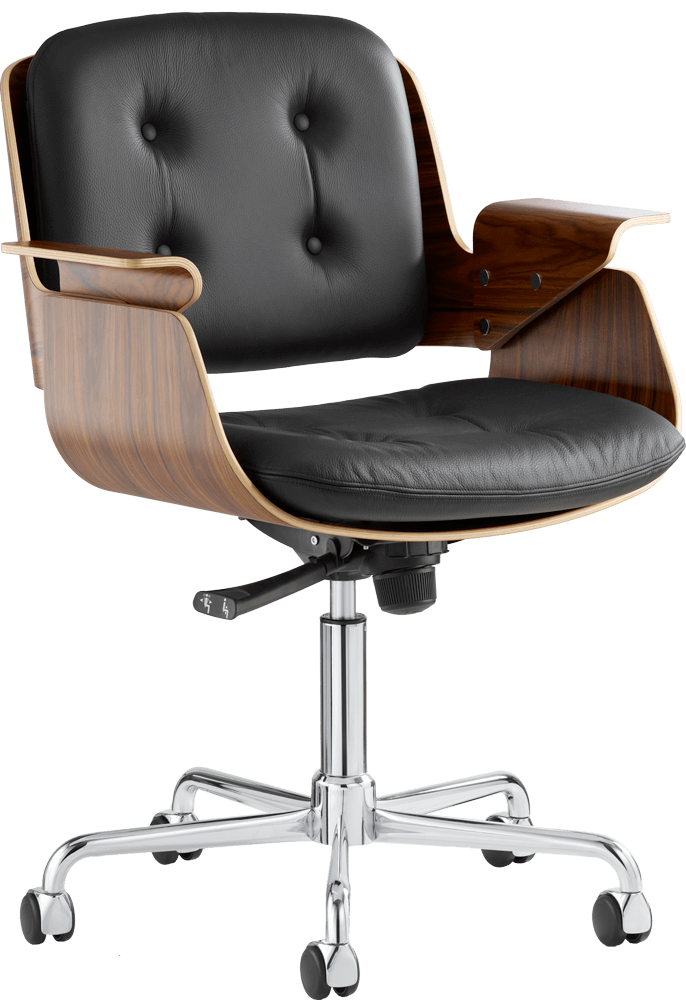

D49
Feel-good place to work and enjoy
A chair that wrote company history. After the architect Hans Könecke designed the beautifully shaped D49 office and conference chair in his studio in Caracas, he founded TECTA in the 1950s and the first series production of the office chair began in Lauenförde. The D49 has since become a classic:
+ read more
- einklappen
four beautifully shaped elements made of bent rosewood plywood combine to create a unique desk chair. The buttoned seat and backrest upholstery made of high-quality leather fit perfectly into the organic shape of the chair. Thanks to the integrated rocking mechanism and gas pressure spring, the D49 can be adjusted in tilt and height as required. A feel-good seat – for working and enjoying.
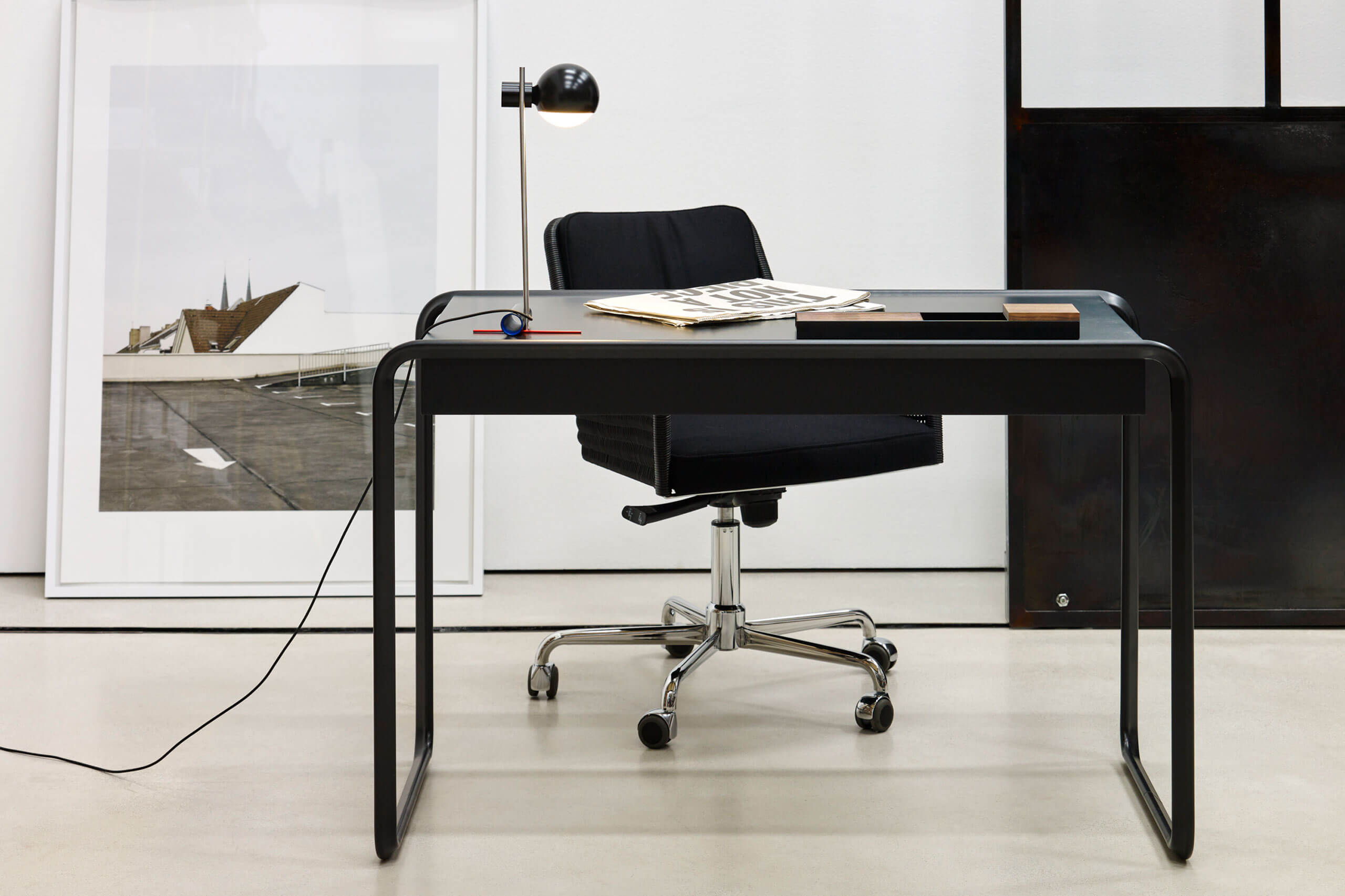
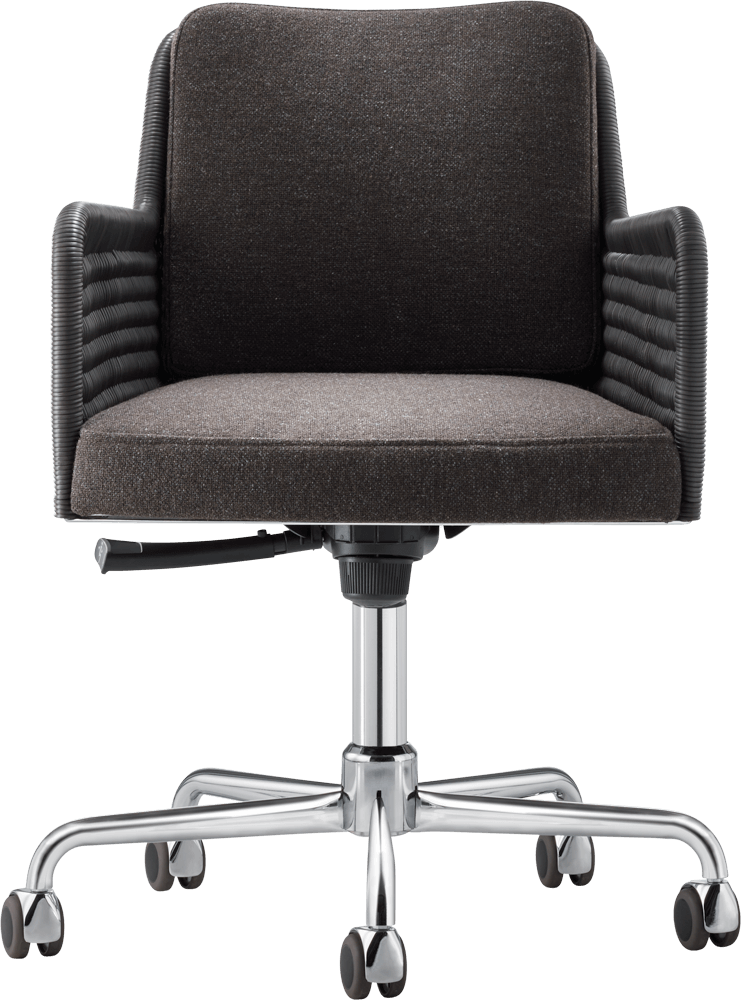
D43R
Office and dining table, the D43 can do both
The D43 is characterised by its soft, organic design. It is cosy and comfortable thanks to the matching seat cushions, which make it suitable for the home office during the day and for dinner at the dining table in the evening. Its speciality is the high-quality wickerwork. The seat shell of the D43 is woven by hand in Lauenförde.
+ read more
- einklappen
A chair, traditionally crafted but with contemporary comfort, that is happy to move from the office to the dining table.
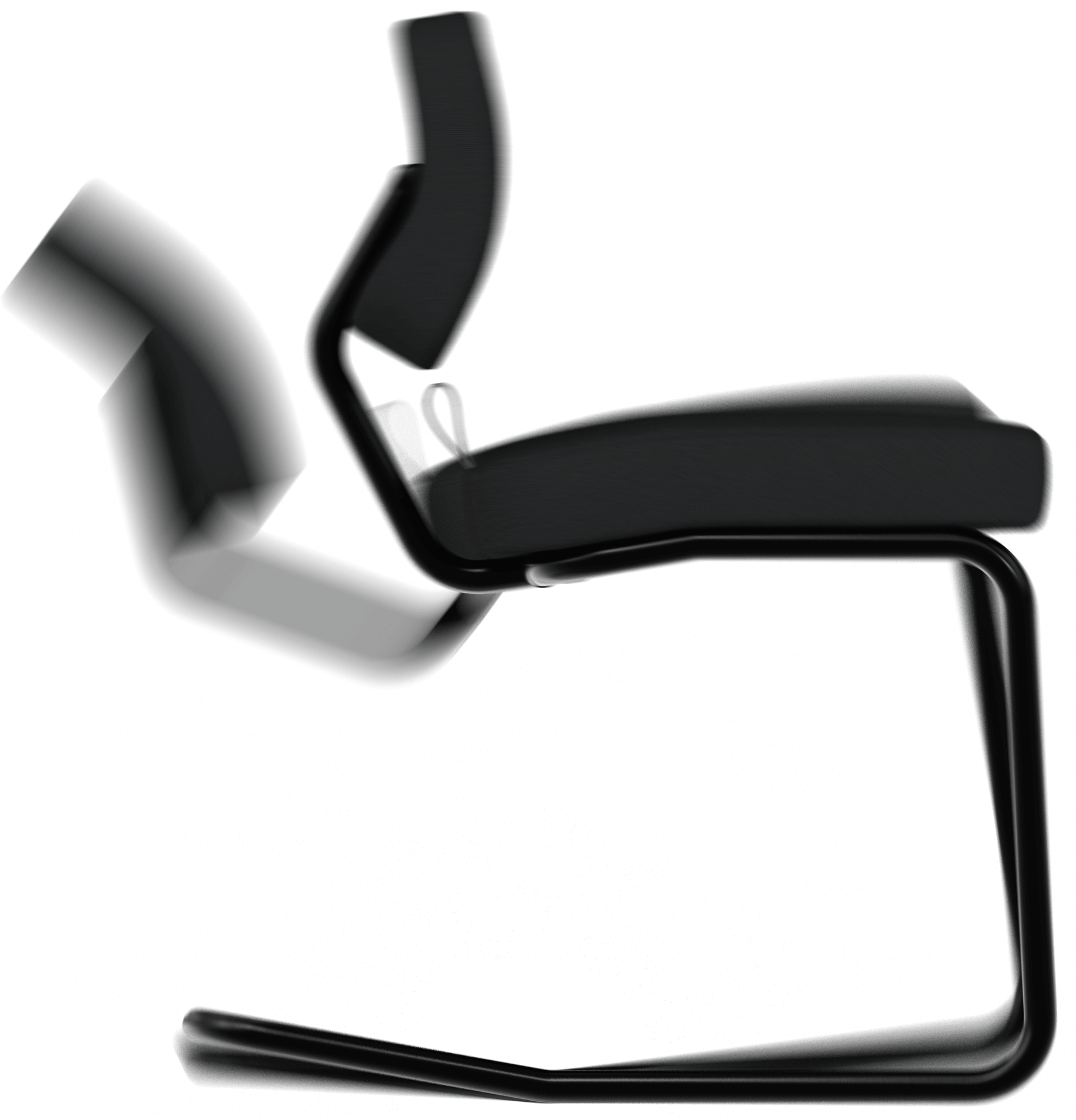

Reversal Chair
A tool for sitting
There are living areas that don‘t tolerate office chairs – and that‘s exactly what the Reversal Chair is made for. It turns the world of the normal office chair on its head and that is to be taken literally. An invisible mechanism and the pull of a small, ingenious tab transforms the chair with backrest into a kneeling chair. ‘I like it when there are different chairs at a table,’ explains Juri Roemmel, designer of the Reversal Chair.
+ read more
- einklappen
He spent three years working on this completely new chair typology. A chameleon, sometimes with a backrest, sometimes designed as a kneeling chair, which gives its owner posture and ensures better circulation and breathing. How does it work? With the kneeling chair, the angle between leg and body is greater, so that an upright, back-friendly sitting posture is created and the body is better supplied with blood. A dynamic companion during the working day or a popular seating candidate for socialising around the table.

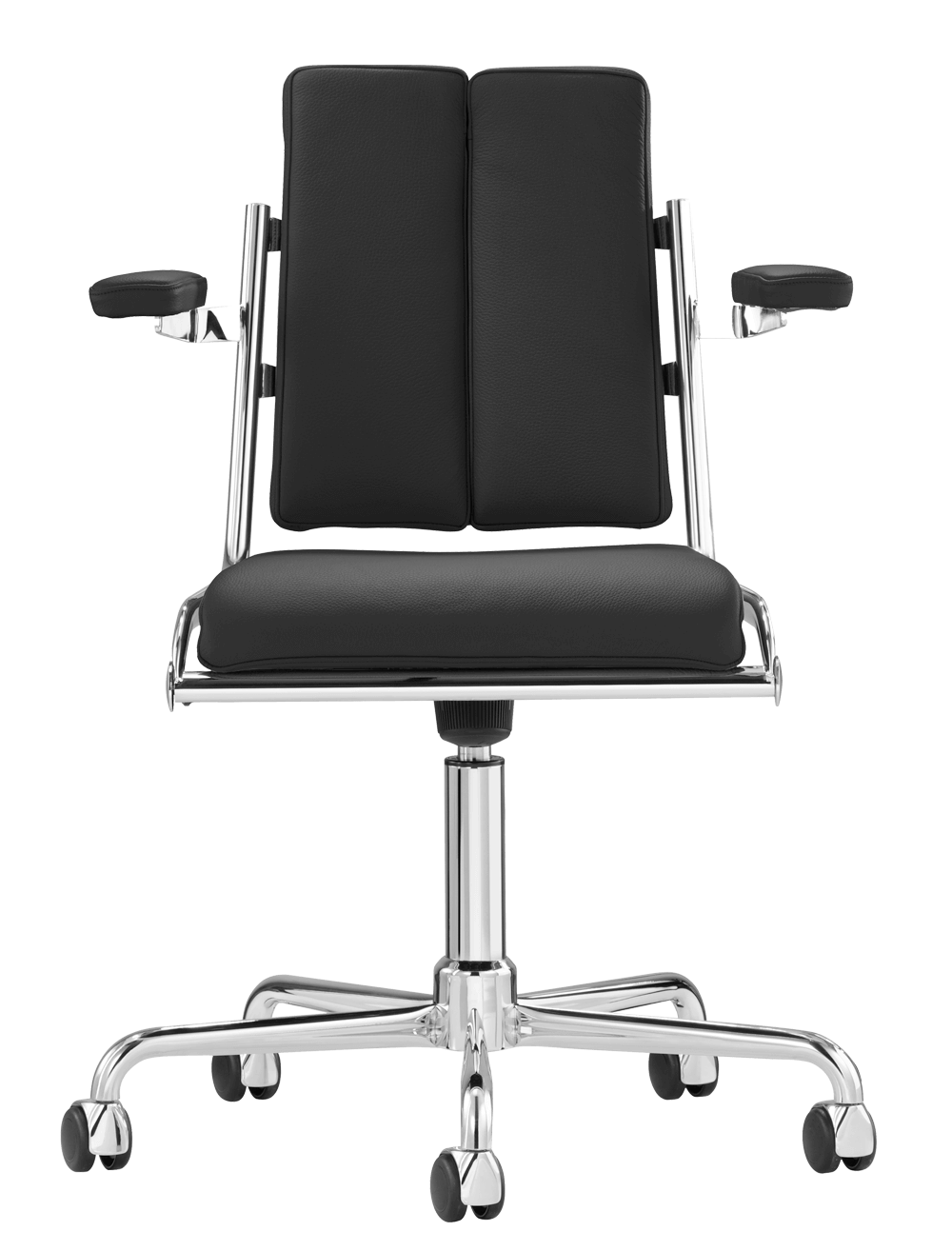
D12
Pleasant comfort
A subtle alternative to the technically overloaded swivel chairs that are omnipresent today: The D12 from Tecta impresses with its particularly soft upholstery on the seat and armrests. The backrest is low but comfortable. Aesthetics and comfort in harmony – swivelling and with adjustable tilt function.
+ read more
- einklappen
With its understated, classic design, the D12 defines the workplace. Hundreds of fabric and leather colours are available for the customised configuration.

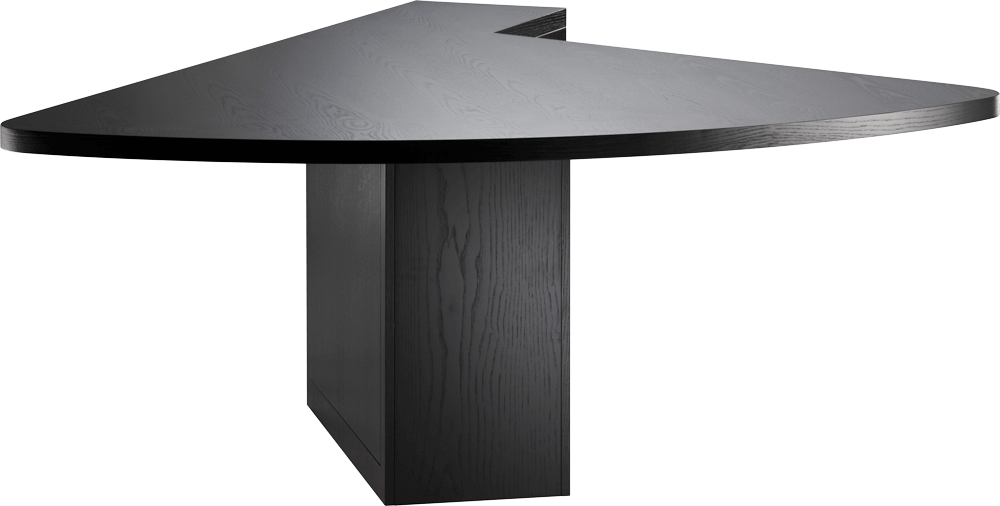
M1, Stefan Wewerka
Looking into the next millenium
It is reminiscent of an elegantly curved fan that unfolds dynamically in the room: the M1 table by Stefan Wewerka. The architect and deconstructivist designed it in 1979. An artist who took apart everyday objects in order to readjust, reshape and rethink them. The M1 was thus created as a piece of furniture that absorbs movement and insists less on rigid seating.
+ read more
- einklappen
A table that reveals a lot about the philosophy behind the things Wewerka designed. His aim was to develop beautiful, modest products that speak of life and its meaning. Of socialising and being together, of work and imagination. These thoughts are at the heart of the M1, which can be a conference table, a family table or a dining table for seven or eight people.
‘You can‘t save the world’, said the artist, “but you can invent things that protect the soul”. This makes the M1 an all-rounder – placed with its flat side against the wall, it blends into the room. Standing alone, it becomes a natural sculpture; with several pieces put together, it forms a duo or trio, symbolising the cloverleaf and large designs.
A hidden speciality is revealed: the master of small and large everyday things has concealed another clever idea in the base of the table: space for crockery, glasses, office utensils or bottles has been thought of here. So at first glance the M1 is a table, at second glance it is a miniature living unit with a keyhole view of the possibilities of living in our millennium.


Prism
The light diffuser
A nod to Prouvé with a strong graphic gesture: the Prism stool diffuses light and creates possibilities. Modularity meets combinability.
+ read more
- einklappen
This may be due to the special shape devised by the designer from Berlin. There is a nod to Prouvé – the circular radius. A reminder of the French designer, but not a provoked one. Because the inspiration for the new, uncomplicated seating furniture was a different one. Pascal Hien comes from the office world, that cosmos in which flexible spaces are needed in which workshops and meetings take place, sometimes with five, but also with 50 people.
For these situations, Pascal Hien had thought of a stool that could later be stacked and retracted into a corner. It has become much more than that. Firstly, a place that is perfect for nomadic working. The hollow space under its seat can be used to elegantly store a jacket and bag. At the same time, it makes a statement in the room with its diamond shape and striking mouldings. The edges are folded and allow dimensions and colour shades to become tangible. The circular radius is a simple but graphically strong gesture. It turns the furniture into a sculpture and reduces the weight of the 4 mm thick aluminium sheet to the desired manageability. The colours, which range from trendy to homely, can be played with to great effect. Once Prism has been used, it doesn’t need to hide away again – you can use it as a sidetable or build an entire room divider from it. Modularity and combinability, a new alliance. And that brings us straight to the inspiration: for the Diamond, Pascal Hien thought of reliefs, which were the inspiration for him. Combinable shapes used by artists such as Karl Heinz Adler or sculptor Erwin Hauer for his openwork, light-diffusing walls. There are five colour variations for the small, clever object. A chameleon that can change its possibilities again and again. Even as a cat cave – well, why not?